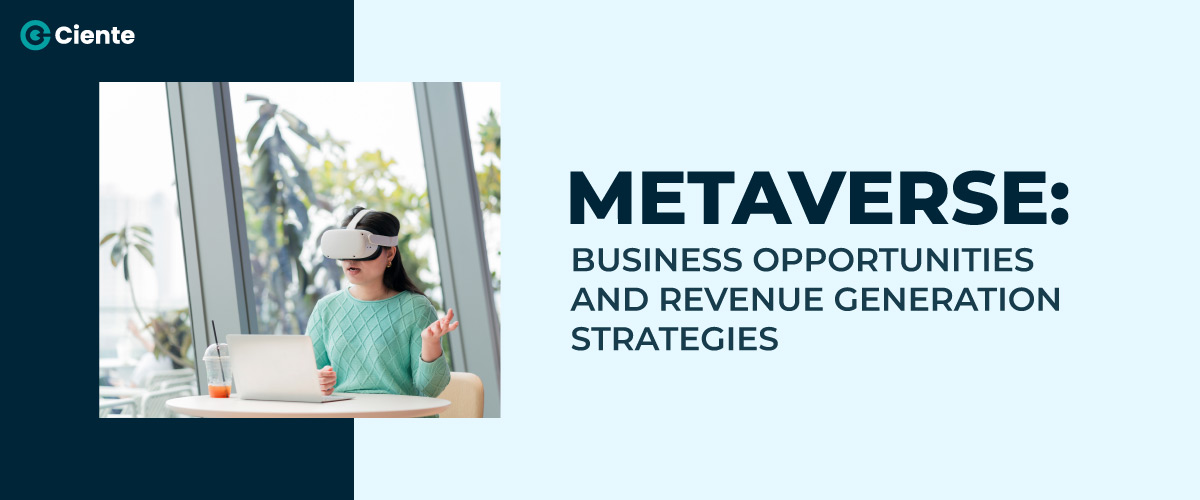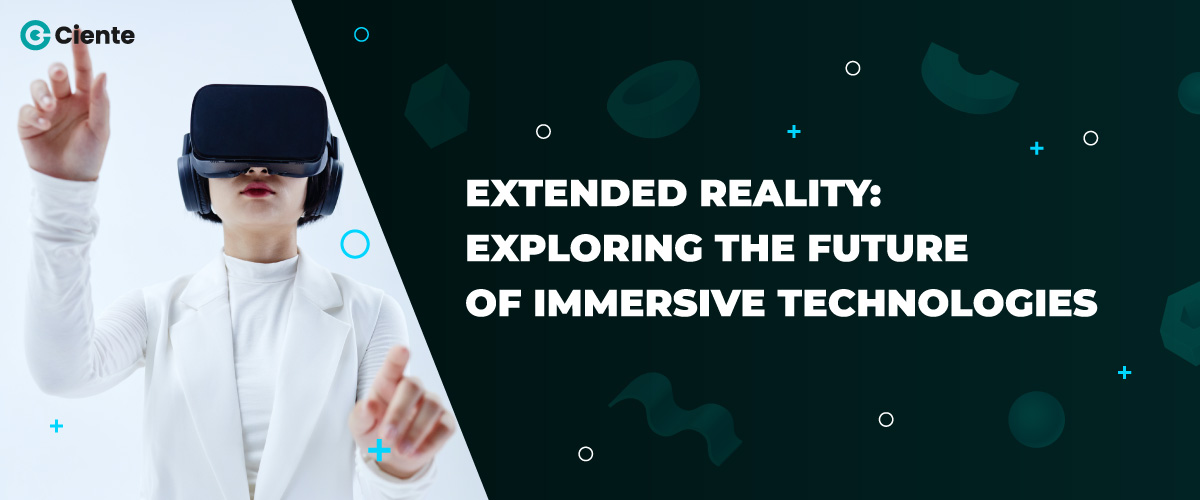Metaverse Business Opportunities and Revenue Generation Strategies
The Metaverse, with its massive potential for businesses, is projected to be a trillion-dollar industry. But how can leaders set their foot in this virtual space?
The world is trading on Metaverse’s capabilities of consistently elevating business opportunities and substantially boosting revenue. Globally acclaimed brands are fine-tuning their strategies to incorporate their business in this virtual space. They know their consumers are enticed by this virtual world’s scope and waiting to reap it all. From improved customer experiences, enhanced learning opportunities to research and development, Metaverse’s platform has the potential to create alternative revenue generation opportunities. Moreover, the neck-to-neck competition between businesses to offer something better to their consumers is positively contributing to innovation across verticals and fuelling brainstorming.
While enterprises, individuals, and entrepreneurs have already embarked upon a rewarding journey and massively cashing in, we delve into this parallel and virtual Universe and discover business opportunities and revenue-generation strategies in this article.
What Exactly is the Metaverse? What are its elements and popular platforms?
Metaverse can be defined as a 3D virtual environment offering an immersive experience with the ability to conjure up a realistic world. This decentralized virtual world is far more significant than just to some gamers who wear gadgets and don avatars. It has successfully created a parallel plane of existence, enticed its audience with larger-than-life perceptions, and opened doors to multi-trillion-dollar business opportunities and revenue-generating capabilities that we discuss subsequently.
Primary segments of the Metaverse
Metaverse establishes itself on a few popular technologies or concepts:
· Blockchain
· Cryptocurrencies, digital tokens like NFTs, digital wallets
· Extended Reality (Augmented Reality, Virtual Reality & Mixed Reality)
· VR headsets, AR glasses, VR controllers, Haptic devices transmitting tactile information to the senses
Metaverse’s leading platforms in vogue:
Metaverse is a lucrative virtual place luring global conglomerates and celebrities with investment opportunities.
Some of the metaverse platforms that are in vogue with their current number of active users:
Decentraland: Monthly active user base: 300000
Decentraland encourages users to buy, own, and sell virtual real estate spaces. Users play games, exchange collectibles, and attend virtual concerts. This platform has its unique currency termed MANA, serving as its crypto-currency.
The Sandbox: Monthly active user base: 201,000
This platform’s users monetize their virtual worlds using NFTs on the Ethereum blockchain.
Roblox: Monthly active user base: 214 million
Roblox has more to it than being primarily an American video game company, as it encourages players to sell their created assets and has its own currency termed Robux.
NVIDIA’s Omniverse: 200 million
NVIDIA’s Omniverse platform, with a thriving user base encourages artists and creators to share their unique content.
Exploring metaverse business opportunities for revenue generation
Metaverse has a profound effect on businesses as it is immersive and decentralized with a limitless scope for creativity. Enterprises want to benefit from it as it facilitates fresher methods to engage consumers, transforms sectors like manufacturing and healthcare, and eases training and learning without disturbing the real-world infrastructure and systems. A McKenzie report predicts Metaverse’s capability to generate revenue up to $5 trillion by 2030, and therefore, it is imperative to gauge how various segments are leveraging it.
Learning & Development
By blurring the realms of physical and virtual worlds, Metaverse eases the concept of learning and development. By mitigating the need for investing in infrastructure and commute, metaverse comes across as an innovative, cost-effective, and result-oriented option helping bridge the gap between trainees and trainers. The immersive environment facilitates trainees to interact with peers, enjoy a novice learning experience and develop skills.
Healthcare
Metaverse is gradually transforming healthcare with advanced Augmented Reality (AR) devices and simulators. Johns Hopkins surgeons use AR devices for spinal surgeries that show the internal anatomy and help surgeons place implants precisely. Telemedicine for several physical and mental health conditions helps mitigate geographical barriers and promotes a safe space with enhanced privacy levels.
Manufacturing
Global conglomerates like Amazon, Siemens, and BMW have invested massively in digital twin technology that helps create a virtual R&D space for safer and more efficient manufacturing processes. BMW’s virtual EV manufacturing factory in NVIDIA’s Omniverse has helped them save millions by deploying simulation technology in 3D models.
Gaming & Entertainment
The Gaming and Entertainment sector are the pioneers of Metaverse, and cannot be ignored as their million-dollar revenue generation capacity has a global userbase. Games maintain a robust monetization strategy by encouraging players to make in-game purchases and subscriptions. Moreover, game developers earn a handsome payout for designing and coding skills. Roblox game developers registered on Roblox’s Developer Exchange Program earned over $600 million annually in 2022.
Virtual Events and concerts
By purchasing their own land in the Metaverse, many celebrities catered to their fans’ demands for virtual concerts. Justin Bieber, Ariana Grande and Daler Mehendi are some of the few artists who performed at virtual concerts on Metaverse platforms like Wave and Fortnite, and their admirers did not resist buying high-priced tickets to attend these virtual concerts.
Military Aviation & Defence
Military Aviation and the Defence segment are not far behind from harnessing Metaverse’s potential to mitigate and control hazards and overcome pressing challenges. With the help of AR devices, military planes empowered with Lockheed Martin technology can digitally map wildfires below with the help of the Cognitive Mission Manager. This technology helps predict wildfire behavior and enables decision-makers to design an appropriate plan of action to suppress those.
Metaverse-related devices market
The devices key to partake in the Metaverse platforms have a global market growing by leaps and bounds. For example, the AR/VR market is predicted to generate revenue worth US$32.1bn in 2023 and grow at a CAGR of 12.60% by 2028. One of the Metaverse gloves prototypes, the Haptic gloves, is predicted to sweep through a market of $2 billion by 2027. Having said that, many globally reputed companies have been investing in Metaverse-related devices as there is a mass market for the products.
Takeaway
Metaverse is open to consistent innovation in the fields of entertainment, healthcare, manufacturing, military, and gaming and transforming the market dynamics globally. While the world is under this wave of immersive, innovative, and altered reality- technology, every business has a choice. They can get swept by the wave, underperform, embrace mediocrity, or harness the power of Metaverse and open the doors to newer opportunities. If by 2030, all key enterprises are anticipated to go the Metaverse fashion, it is about time to see where this technology fits the scheme of things for every business, small, medium, or large. The decentralized parallel universe is not a mirage anymore, it is right around the corner, waiting to be explored deeply.
They say it is the “successor state to today’s internet” and this clearly indicates a paradigm shift of the global audience base who want to perceive a more seamless connectivity and experience. The thriving multiverse, as it is called, with amplified revenue-generating capacity is here, waiting to be explored, improvised, digitized, and leveraged, and we as a generation are here to witness what it beholds.


